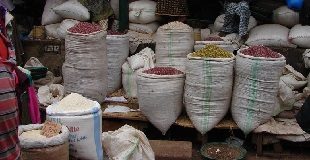
By Agnes E. Nantaba
Oliver Lalani is the Managing Director of steel manufacturers Roofings Group. He talked to Agnes E. Nantaba about their operations and other pertinent issues in the manufacturing sector in Uganda.
What are the key elements in your management style as a manager?
The philosophy is a highly standardized practice of management. As a team, we always strive to have a standard form of management which focuses a lot on improvement in a continuous way. We have also borrowed a business model of the Japanese called Kaizen. The model works in such a way that the manager looks out for continuous improvements in processes and innovation. The model allows even the lowest employee like a cleaner to propose improvements in the system. It’s a holistic approach where every member is involved in decision making. In the past, management styles especially in East Africa have been autocratic where one or two individuals take decisions but involving people from top to bottom creates room for continuous progress.
Communication is key which gives people a voice to make their decisions and makes them accountable for their performance. This makes everyone have a measurable quantifiable target to achieve and add to the company. I am both a delegation and do-it-yourself manager depending on the magnitude of the work and the expertise needed. For instance I feel I am more skilled in terms of negotiation for steel contracts so I prefer to do that myself because I have good knowledge of the steel market in the world. For other departments like finance, I delegate through the managers who may lower down the work to the team.
Roofings Group has more than one company under its portfolio, what is your strategy in ensuring that all of them remain relevant and achieve their targets?
We are very close in terms of cohesion with all the companies under the group. We have Roofings Rolling Mills in Namanve, a sister to Roofings Ltd, which doubles as the Parent company. Both companies are interlinked as most of the raw materials to Roofings Limited come from Namanve. We have vertically integrated our business model, which allows us to manufacture our own inputs from the basic raw materials much as we still import them. We hope that they will be sourced locally with the iron ore processing plant that we are looking at putting up. Both companies rely on each other because one is the customer of the other. This makes it closely integrated and managed by the team.
How far have you gone in implementing your project that intends to utilize iron ore in Uganda to make steel?
This is on the top agenda for us, the government and development partners because Uganda has a lot of iron ore of good quality and located on the surface of the rock therefore easy to explore. The market is big enough to consume up to 500,000 tonnes. However the main challenge remains energy and the absence of reducing agents such as coil or natural gas to lessen the ore into steel and this should be in very big quantities. For every tonne of steel you make, you need one tonne of coil so if you look at the logistical challenge because there are no confirmed deposits in Uganda unlike in Tanzania, it would be very expensive to bring in coil and compete at international market prices. However as Roofings, we already have two exploration licenses and we have heavily interacted with international machine suppliers who are interested in the project. They will be coming into the country very soon for further consultations. We hope in the next one year, we shall be at more advanced stages of work on the ground.
What is your assessment of the country’s manufacturing sector?
The statistics indicate that in some years, there has actually been a decrease in the manufacturing output in Uganda. In 2011/12, the sector shrunk while in 2013/14, the growth was estimated at about 1.6%. If the economy is growing at 6%, manufacturing should grow accordingly but in the Ugandan economy services are growing at a faster speed than manufacturing. This has got to do with the availability and quality of reliable power although this is being addressed by the government. On the whole, the cost of doing business in Uganda is very high and puts the sector at a disadvantage over her counterparts like Kenya because of the logistical costs, access of skills and power, proximity to markets. The other critical issue is local content.
Why would companies like Roofings that has invested over $150 million in a plant in Namanve and has very strong quality management systems and controls in place fail to access government markets?
It has to do with the mindset because in the past we didn’t have quality products in Uganda but the case is different now. The share of government procurement is very important because if the retail market buys like 52% of the products, then the 40% should be procured by government infrastructural projects such as dams, bridges, railways and roads but we don’t get the envisaged support. Most of the steel bars are imported from countries like China. I am not trying to stab my own sector in the back, but there is a lot of tax evasion in the private sector, which makes us doubt the statistics of the output of the manufacturing sector because there is a lot done in illicit trade. This is an issue that doesn’t get enough limelight. It creates an unleveled playing field for the sector. These are the key challenges that make the sector lag behind.
In 2013, you launched the Roofings Rolling Mills Namanve, how far has it gone in achieving its target as a backward integrated plant to supply Galvanized & colour coated roofing coils to the downstream sheet forming market.
Before we established the company, we were importing the coated coils from Japan and we have seen very good volume growth. We were doing about 3,000 tonnes of galvanized and colour coated sheets before, which has more than doubled to 6,700 tonnes in a space of two years. The reason behind is the 25% duty, which gives us protection against imports. The whole steel market is growing at between 15-20% per annum and our capacity is more than sufficient to supply the market for the next five years even at this growth.
Roofings recently unveiled a new product dubbed Tilcor. How does the product work and how has it performed over the last six months?
Tilcor are stone coated sheets, which have a metallic base. Instead of coating with paint, they are coated with glue and fine pieces of stone. It emulates the clay tiles and it’s competitive in the market. We are not manufacturing the products ourselves yet, but we hope to start manufacturing it locally in Namanve in the nearby future.
How is Roofings group working to stabilize the fluctuating performance of the manufacturing sector in Uganda?
The milestone has been putting up a plant that is rated at global standards. We manufacture to the tune of both Ugandan standards and international standards. We have some of the best technology. If we utilize our capacity at Namanve, we shall be more competitive in terms of unit cost because with any manufacturing entity, the more you produce with one set of resources, the lesser the cost. If we run for instance at 80% capacity utilization, we will be very cost effective in the market given the fact that we have ruled out the elements of quantity, capacity, quality and price.
What is your projection of the manufacturing industry in Uganda in the next few years?
As Roofings, we fall under the construction sector which is currently valued at $4 billion per annum. By 2018 taking into account the construction of the refinery and other mega infrastructural projects, the sector is projected to be valued at about $8 billion. This is the entire revenue generated through construction activities. That poses a great opportunity for the manufacturing sector but only if contracts are won by local manufacturers. We are optimistic about the future otherwise we wouldn’t have made such big investments. However, we also think that some projects like the Standard Gauge Railway, refinery and pipeline have delayed a bit, which may fail us from hitting the projection within that time frame.
Where do we see Roofings Group in the next few years?
The future of Roofings Group lies in its history – having started in 1994 with only 60 people and a coverage area of 2,000sq meters. Today, we have a coverage area of more than 170,000sq meters with an employment base of 2,200 people in Uganda alone. This has only been possible with a lot of hard work and persistence in the philosophy to do things right in terms of quality and quantity. We are not here for five or ten years but for the generation of the growth and development of Uganda. We have a regional ambition with the EAC integration although we propose that it should be executed rightly in a manner that benefits the competitive advantage in each country. We have just started in Rwanda three months ago but have already secured six acres of land on which we hope to start manufacturing for the Rwandan market. We also have ambitions in Kenya and Southern Sudan but Roofings Group shall always remain a Ugandan company.
 The Independent Uganda: You get the Truth we Pay the Price
The Independent Uganda: You get the Truth we Pay the Price


